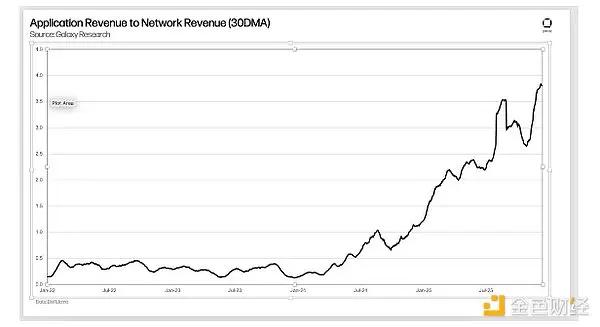Author: Fairy, ChainCatcher
Editor: TB, ChainCatcher
In this cycle, Ethereum is facing a myriad of challenges: the frenzy of MEME coins has drained funds and attention, the prosperity of Layer2 has backfired on the mainnet value, and the Ethereum Foundation has also been criticized for its "inaction". Doubts about Ethereum are rising in the market, and Ethereum, once hailed as the "king of public chains", is being mocked by the community as the "declining old order", and Vitalik has also fallen from the "pedestal".
Market indifference, internal consumption of the ecosystem, and weak coin prices, Ethereum finally couldn't sit still...
Facing the community, developers, and investors, a "self-rescue operation" has officially begun. The adjustment of Ethereum Foundation personnel and the establishment of new departments are undoubtedly the first shot of this reform.
The Rebirth of the Ethereum Foundation
The signal of reform was released as early as January 13th. From the activation of the official X account to the establishment of new departments and the introduction of new talents, the structure of the Ethereum Foundation is undergoing profound adjustments.
The recent actions of the Ethereum Foundation are shown in the figure:

New Organization, New Structure, New Mission
In terms of organizational structure, three important organizations related to the Ethereum Foundation have been recently established, focusing on different dimensions such as technology, governance, and institutional connections.
- Etherealize: Connecting Wall Street and Ethereum
Etherealize is the institutional-level marketing and product department of the Ethereum ecosystem, aiming to promote the adoption of ETH in the traditional financial market.
Its core mission is to drive the adoption of institutions in both directions: on the one hand, to promote Ethereum as a value storage asset and underlying technology platform to institutions; on the other hand, to build financial products to bring institutional funds and users into the Ethereum ecosystem, strengthening the economic circulation of the mainnet.
The establishment of Etherealize indicates that Ethereum is promoting institutional adoption and building a more open and inclusive financial ecosystem.
- EF Silviculture Society: Defending the Core Values of Decentralization
Composed of 15 non-Foundation members, it is an informal advisory group whose main function is to ensure that the development of the Ethereum ecosystem is in line with core values such as open source, privacy, security, and censorship resistance. EF personnel can seek advice from them through dedicated channels.
The EF Silviculture Society reflects Ethereum's further strengthening of the community governance structure and allows more senior developers and industry experts to participate in Ethereum's discussions.
- Ethereum Foundation Research: The Pillar of Technical Innovation
The research department of the Ethereum Foundation, which will consist of five teams: the Application Research Group (ARG), Consensus R&D, Cryptography, Protocol Security, and RIG. These five teams cover the core aspects of Ethereum's development, providing a fundamental guarantee for technological evolution and ecosystem optimization.
7 Personnel Adjustments, Reshaping the Core Team
In addition to the establishment of new organizations, the Ethereum Foundation has also undergone a large-scale leadership adjustment. Vitalik stated that the purpose of this adjustment is to improve the technical expertise of the Foundation's leadership, strengthen two-way communication with the ecosystem, promote the influx of new blood, and increase support for application-layer developers.
The details of the position adjustments are shown in the figure:

Among all the adjustments, the most notable is the promotion of the former Executive Director of the Ethereum Foundation, Aya Miyaguchi, to the position of Chair, (related reading: Multiple Perspectives | Aya Miyaguchi Takes Over, Can Ethereum Regain Market Confidence?), and Hsiao-Wei Wang and Tomasz Stańczak have been appointed as Co-Executive Directors.
Hsiao-Wei Wang has been deeply involved in Ethereum for many years and is one of the Foundation's long-term researchers focused on protocol layer and core technology. She has been deeply involved in the development of the Beacon Chain, sharding technology, and the Casper consensus mechanism, and has a deep understanding of Ethereum's underlying architecture and decentralized governance.
Tomasz Stańczak, on the other hand, is a "versatile" individual with both entrepreneurial experience, execution ability, and a global vision. He has accumulated years of experience in traditional finance and technology, and later entered the crypto industry, founding Nethermind, one of the most important Ethereum client. He has also played core roles in projects such as StarkNet and Forta. He not only has a strong technical background, but is also skilled at team management, product implementation, and building global cooperation networks.
These two new Co-Executive Directors have their own advantages and form a complementary leadership team. Their combination can drive the Foundation's technical research, and also bring more efficient management and decision-making in ecosystem building, market expansion, and community governance.
Market Voices: Hope and Concerns in the Midst of Change
Regarding the recent actions of the Ethereum Foundation, there are mixed reviews. Ethereum core developer Tim Beiko stated that the recent organizational restructuring of Ethereum will be a historic turning point. The new organizational structure will ensure that Ethereum keeps pace with the times while maintaining its original values.
However, KOL @TrustlessState still expressed skepticism about the Co-ED model. Ethereum needs strong executive leadership. Given that Ethereum's competitors are using its flat management model as an advantage, the choice of Co-Executive Directors means the Foundation is still maintaining this flat structure.
Crypto KOL @0xNing0x summarized the personnel changes in a more mocking way: "The high school female teacher has stepped back to become the chairman, the technical researchers and engineers have become the co-rulers, and the marketing experts are leading Ethereum to embrace commercialism. The era of the left-wing terror rule of Ethereum has ended, and its positioning has shifted from the vague 'infinite forest garden' to the community of crypto-punk thinkers. Back to the original intention, not forgetting the mission."
The market's response to Ethereum's reform is clearly polarized. Supporters see the potential of Ethereum in terms of technology, governance, and ecosystem expansion, and believe this is an important step towards a new stage; while skeptics have concerns about the efficiency and execution of the Co-ED model.
Structural adjustments alone are not enough to reshape market confidence. The real test lies in whether Ethereum can demonstrate sufficient execution and adaptability in future technological innovation, ecosystem development, and market strategy. In any case, Ethereum's reform has already begun....






